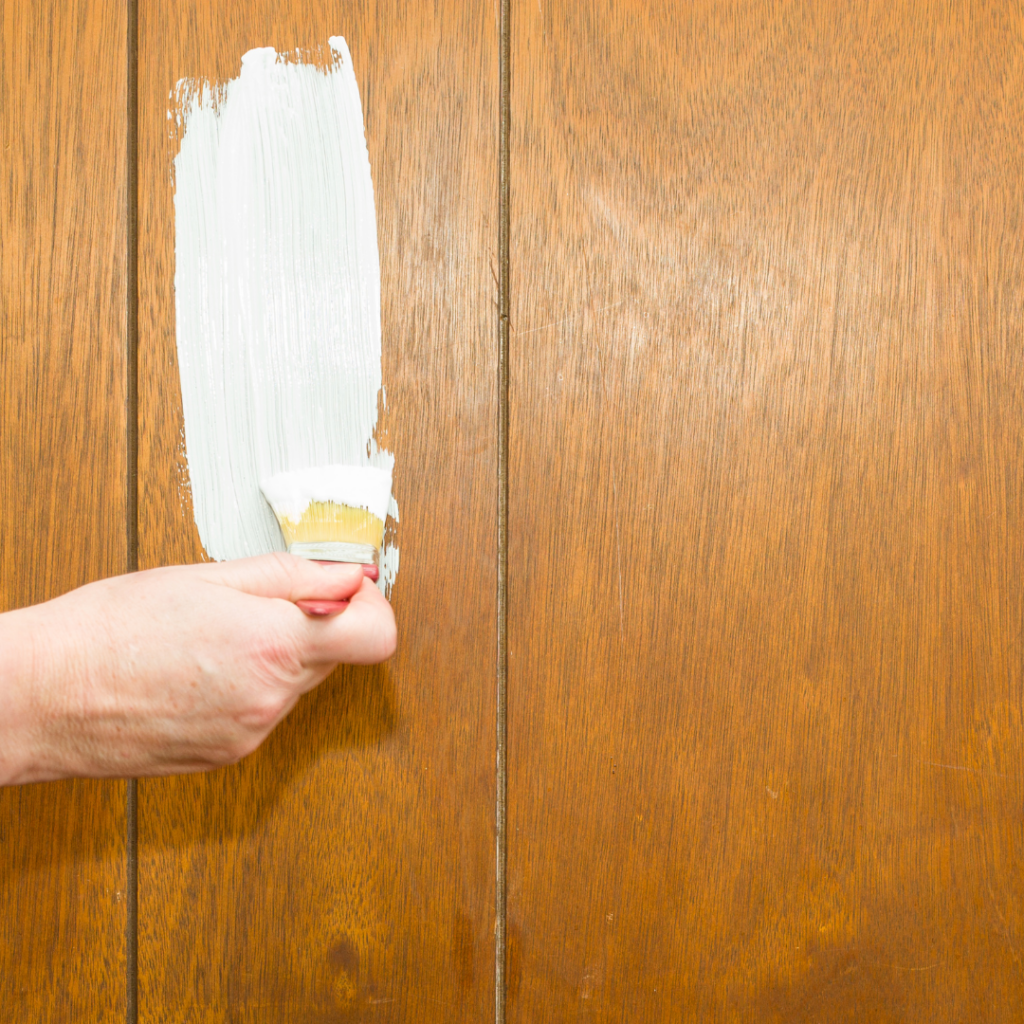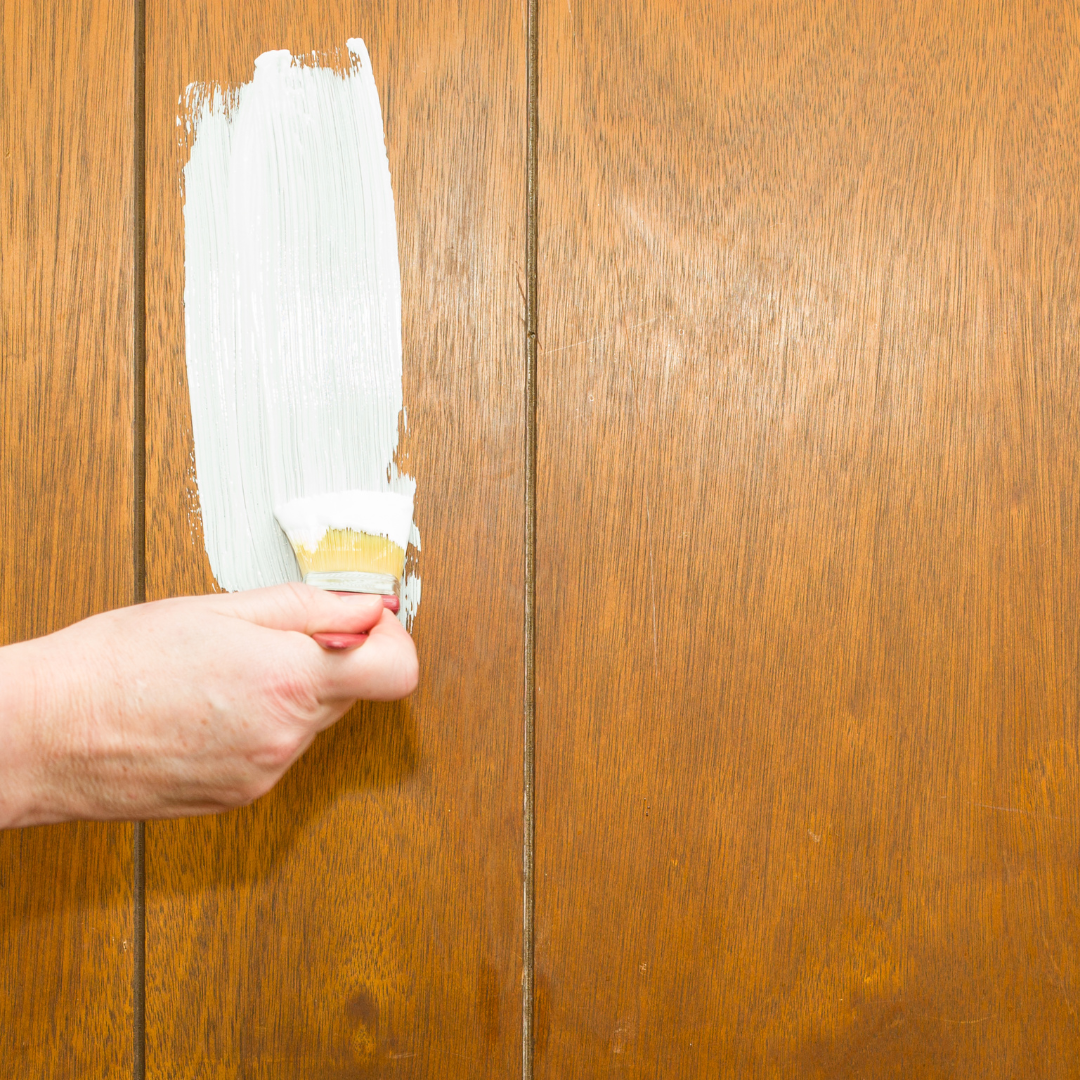Priming Wood Before Painting: Why it matters: Painting wood surfaces can seem deceptively simple. After all, how hard can it be to slap some paint on and call it a day, right? As any professional painter will tell you, proper prep work is crucial for significant, long-lasting results. Using a suitable primer is an essential part of this process. But why does primer matter so much when painting wood? Let’s take a closer look.
Priming Wood Before Painting: What Exactly Is A Primer?
Before we understand why using a primer is essential, let’s make sure we all understand what a primer is. Essentially, a primer is a preparatory coating that is applied before painting. Primers are designed to provide a uniform surface for the paint to adhere to, ensuring better coverage.
Primers also create a protective barrier between the paint and the wood surface. In the long run, this helps to prevent issues like tannin bleeding, where naturally occurring tannins in the wood leach through water-based paints and cause staining. The sealing properties of primer prevent this.

Should Primer Be Used on Wood Before Painting?
In most cases, yes. Applying primer before painting wood is recommended by almost all paint manufacturers. Priming ensures you don’t run into issues later on, like peeling, cracking, or stains bleeding through.
However, some modern paints are formulated as “paint and primer in one.” This means they contain special additives that allow them to serve the function of a standalone primer and topcoat in a single product. If you use one of these all-in-one paints and follow the manufacturer’s application instructions, you can do so without needing a separate primer.
But dedicated primer is still advisable for best results on critical surfaces like cabinets, furniture, trims, etc. The primer layer provides extra insurance so that you won’t run into problems with your paint job down the road.
What Happens If You Omit A Primer?
Skipping primer may seem tempting to save time and money. But this shortcut can come back to haunt you in several ways:
- Peeling paint – Without a primer to bond the paint to the wood, the topcoat may start to peel, especially on surfaces with heavy wear, like cabinets and trim.
- Visible wood grain – Primer helps fill in the wood grain so it doesn’t telegraph through the paint. Skipping it may lead to visible grains in your finish.
- Tannin bleeding – Those pesky wood tannins can cause unsightly yellowish staining without a primer to block them.
- Uneven absorption – Paint soaks into porous woods unevenly without primer. This can create a blotchy, irregular look.
- Stains bleed through – Any stains in or on the wood can bleed through your beautiful new paint without primer to conceal them.
- Extra coats needed – Paint doesn’t cover as fully without primer, so you may need additional coats to hide the underlying surface.
As you can see, primer is a beneficial prep step that leads to better-looking, longer-lasting results from your paint job.
Priming Wood Before Painting: What are the Benefits Of Paint Primer?
Beyond just avoiding the potential pitfalls outlined above, the primer offers many positive benefits for your painted wood surfaces:
Primers Seal the Wood
Wood is naturally porous and absorbs paint unevenly. It can lead to a blotchy or uneven look after painting. Primers are formulated to seal the wood, creating a uniform surface for the paint to adhere to. Primers fill in the cracks and grains in the wood, allowing for smoother paint application and coverage. Skipping the primer often leads to the need for multiple coats of paint to achieve an even look. Using an oil-based or high-quality latex primer ensures your topcoat of paint goes on smoothly.
Primers Allow for Proper Adhesion
In addition to sealing the wood, primers also allow for proper adhesion of the topcoat of paint. Primers bind to the wood surface and provide a uniform surface for the paint to grip. It leads to a longer-lasting paint job that holds up better over time. Proper primer promotes chemical bonding between the layers and strengthens the paint job. Be sure to choose a primer suited for your type of paint, either latex or oil-based, for the best adhesion.
Primers Help Cover Stains and Blemishes
Existing wood surfaces often have stains, knots, tannins, or other blemishes you want to cover up when painting. Using a primer specially formulated to block stains and tannins ensures these imperfections don’t bleed through the new paint. Stain-blocking primers contain additives that seal in stubborn stains from water, smoke, markers, grease, and more. Tannin-blocking primers work well on woods like cedar and redwood that contain natural tannins that can discolor paint. Apply 1-2 coats of these special primers before painting for flawless results.
Check out this article if you want more information about painting MDF boards.
What Type Of Primer Should Be Used For Wood Surfaces?
When selecting the suitable primer for wood, you’ll need to consider the specific paint you’ll be using and the wood type you’re working with. Here are some recommendations:
- For interior wood, use a high-quality latex or oil-based primer. Latex is fine for most woods. Use oil-based for tannin-rich woods like cedar and redwood.
- Use an exterior latex or oil-based primer for best protection for exterior wood.
- For stained wood, use an oil-based primer like Zinsser Cover Stain to seal the wood and prevent bleeding.
- Opt for a stain-blocking latex primer for freshly stained wood for proper curing.
- A bonding primer will ensure the paint adheres well to the surfaces for pressure-treated lumber.
Consulting with a knowledgeable paint retailer can help you identify the primer for your specific wood painting project.
Priming Wood Before Painting: Your Trusted Painting Expert
At Link Solutions Painting Company, we have deep expertise in painting projects, from surface prep to flawless finishes. Let us handle the details of your next painting job – with skilled craftsmanship, top-tier products, and conscientious service guaranteed. Contact us today for a free quote on your upcoming wood painting needs!
Google us!


